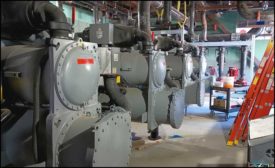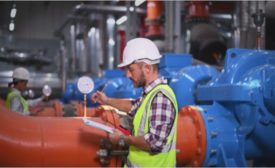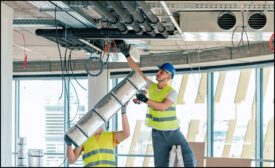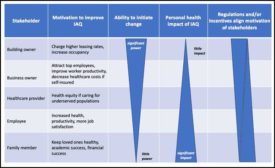Home » Keywords: » decarbonization
Items Tagged with 'decarbonization'
ARTICLES
Sustainability and decarbonization are two top priorities
Read More
The new all-electric heat recovery paradigm
Current geothermal, wastewater, solar thermal, and air-to-air approaches
February 27, 2024
Greenly growing in the US carbon footprint market
Since its arrival on the US market in 2022, Greenly has successfully positioned itself as a provider of carbon footprint management solutions
February 13, 2024
ASHRAE concludes Chicago Winter Conference with accelerated decarbonization action
At the Conference, 2023-24 ASHRAE President Ginger Scoggins shared updates pertaining to the Society’s current theme, decarbonization
January 30, 2024
Advancements in chiller designs save space and increase efficiency
Chiller performance and size no longer need to be at odds
January 16, 2024
Meeting IAQ and decarbonization goals using smart building systems
The right combination of smart building tools and strategies can improve indoor environments while reducing energy use
January 15, 2024
Carrier to commercialize carbon-reducing cooling technology
Deal to benefit AirJoule dehumidification commercialization
January 8, 2024
Incentives and obstacles in managing IAQ for occupant health
Will we take actions to protect the health of occupants, or will we fall back on a myriad of familiar excuses?
December 22, 2023
How universities across the US are approaching carbon reduction differently
Video: Utility directors share how they plan to reach carbon neutrality with varyingly ambitious timetables
December 7, 2023
How building managers can take a piece meal approach to mechanical changeouts
The high expense of decarbonizing mechanical rooms can be lessoned, says Dan Rettig, senior product manager for heat pumps and sustainability at Lochinvar
November 28, 2023
EVENTS
Sponsored Webinar
9/21/23 to 9/21/24
Contact: Ian
What is the “Next Level Up” building management solution & how does it affect corporate sustainability goals?
Get our new eMagazine delivered to your inbox every month.
Stay in the know on the latest HVACR engineering trends.
SUBSCRIBE TODAY!Copyright ©2024. All Rights Reserved BNP Media.
Design, CMS, Hosting & Web Development :: ePublishing






.jpg?1705683724)







.jpg?height=168&t=1701967653&width=275)